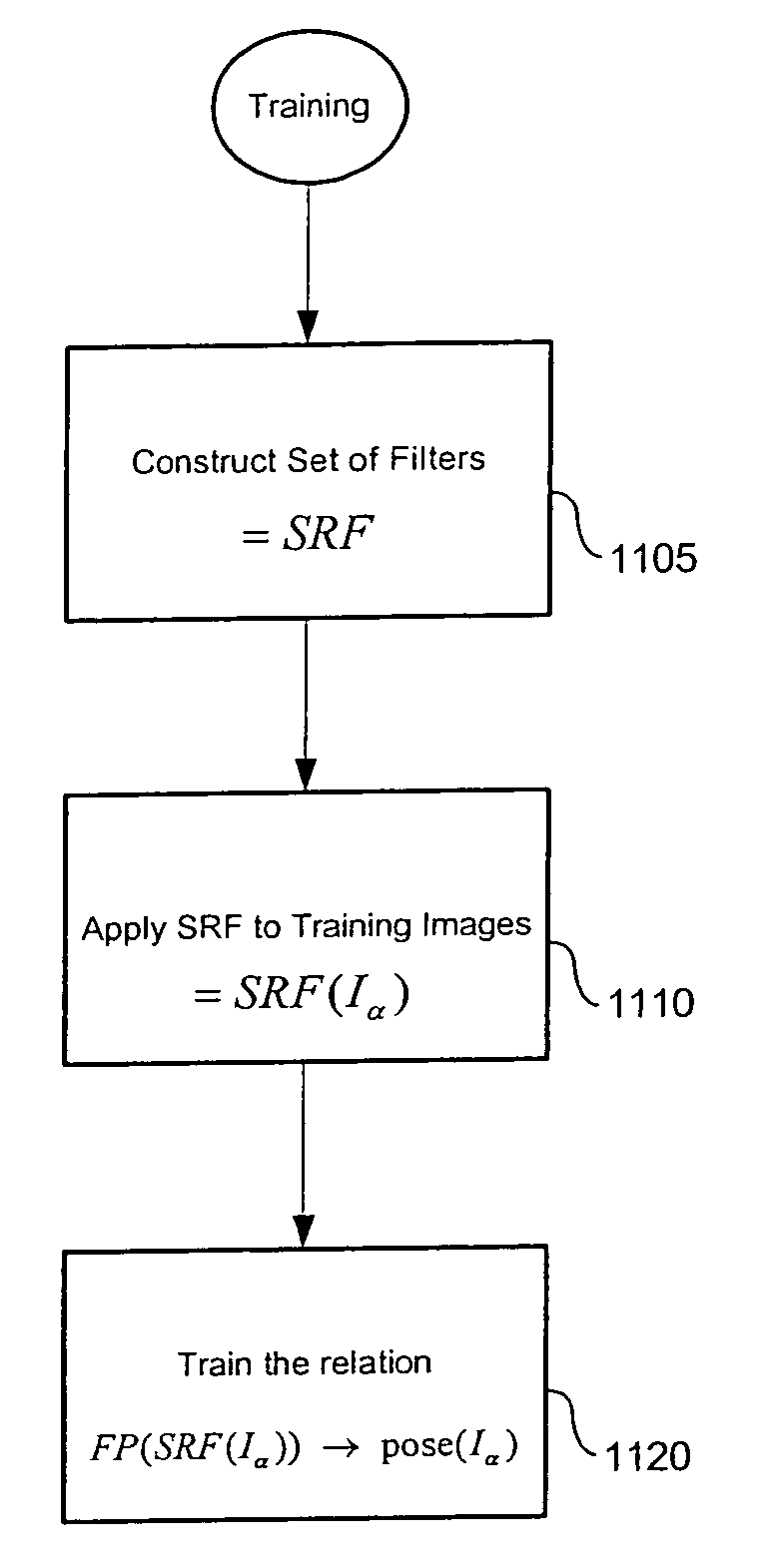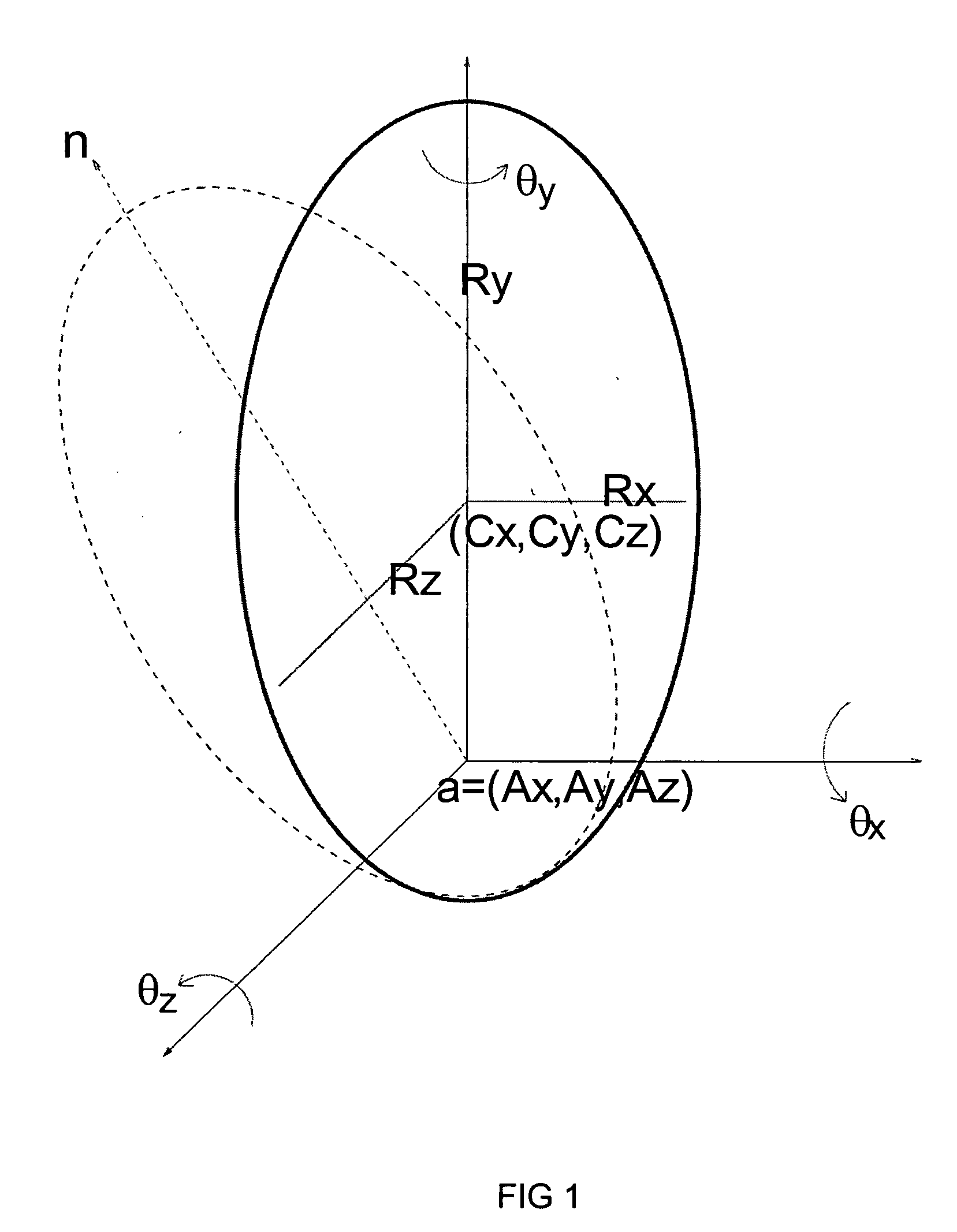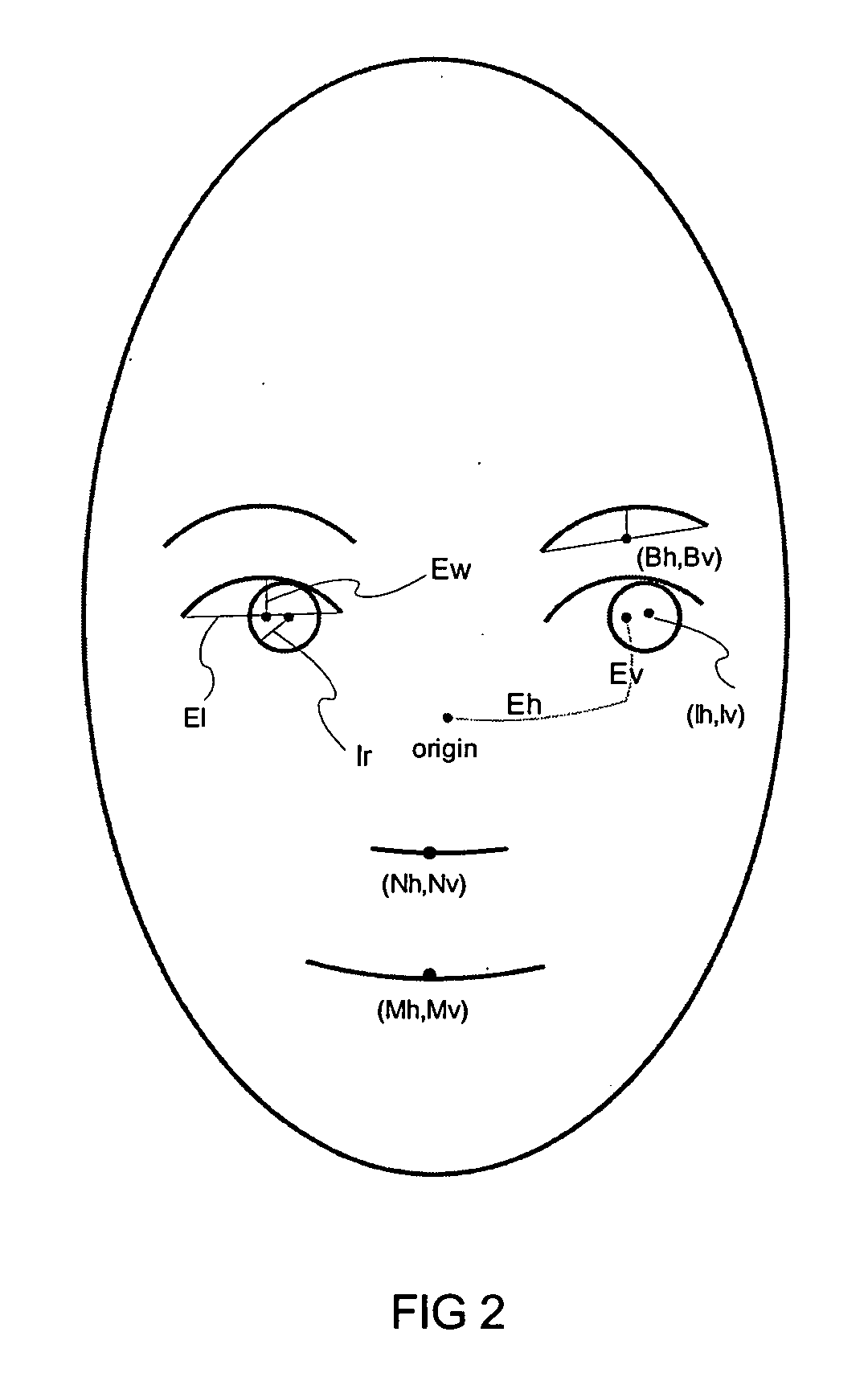Estimating facial pose from a sparse representation
a sparse representation and facial pose technology, applied in the field of personal identification, can solve the problem of not being able to generate samples that cover the entire parameter range uniformly, and achieve the effect of reducing the number of facial poses
- Summary
- Abstract
- Description
- Claims
- Application Information
AI Technical Summary
Benefits of technology
Problems solved by technology
Method used
Image
Examples
Embodiment Construction
[0020] Sparse Representation of the Face and the Pose
[0021] While the size and the shape of the human face varies within small ranges, it is hard to model the variety of appearance of the human head, or the face in real life due, in part, to changes in hair style or clothing. On the other hand, the facial elements such as eyes or mouth are usually exposed to view, and their sizes, shapes and relative positions vary within a relatively limited range. In addition, the appearance of such features usually does not vary much with different lighting conditions. As such, we can model the image projections of these features using simple curves on a 2D surface, and changes in their appearance due to pose changes can be modeled using the rotation of the surface. FIG. 1 is a schematic representation for our rotational model of the human head.
[0022] A. Head Model
[0023] With reference now to that FIG. 1, we model the head as an ellipsoid in xyz space, with z being the camera axis. Represented...
PUM
 Login to View More
Login to View More Abstract
Description
Claims
Application Information
 Login to View More
Login to View More - R&D
- Intellectual Property
- Life Sciences
- Materials
- Tech Scout
- Unparalleled Data Quality
- Higher Quality Content
- 60% Fewer Hallucinations
Browse by: Latest US Patents, China's latest patents, Technical Efficacy Thesaurus, Application Domain, Technology Topic, Popular Technical Reports.
© 2025 PatSnap. All rights reserved.Legal|Privacy policy|Modern Slavery Act Transparency Statement|Sitemap|About US| Contact US: help@patsnap.com



